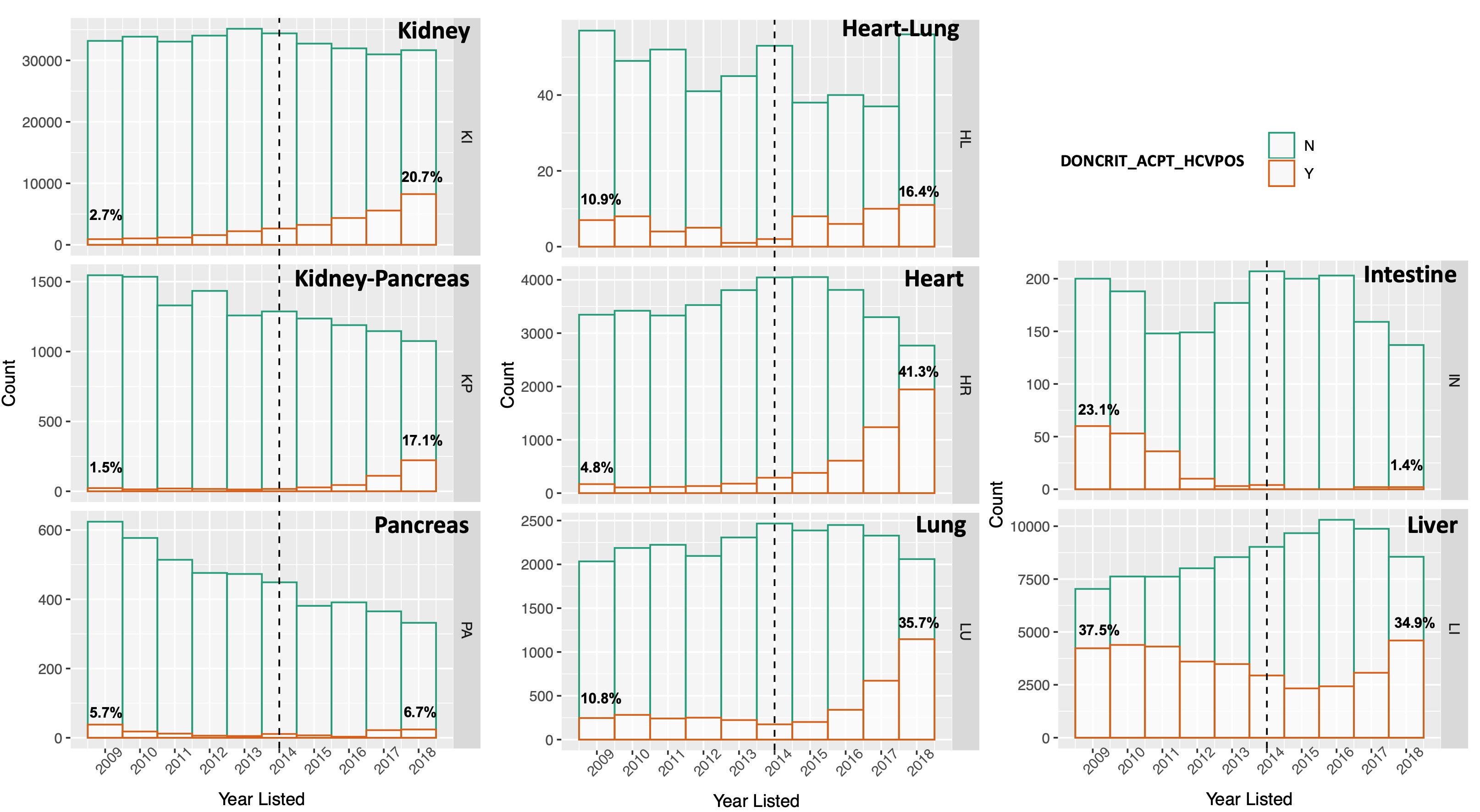Change in the Willingness of Transplant Candidates to Accept Hepatitis C Virus Positive Deceased Donor Organs in the Era of Direct-Acting Antivirals
Q. Yuan, S. Hong, E. Roth, M. Sise, E. Bethea, W. Williams, H. Yeh, N. Elias
Transplant Center, Massachusetts General Hospital,Harvard Medical School, Boston, MA
Meeting: 2020 American Transplant Congress
Abstract number: 279
Keywords: Allocation, Donation, Graft acceptance, Infection
Session Information
Session Name: All Organs: Viral Hepatitis
Session Type: Oral Abstract Session
Date: Saturday, May 30, 2020
Session Time: 3:15pm-4:45pm
 Presentation Time: 3:27pm-3:39pm
Presentation Time: 3:27pm-3:39pm
Location: Virtual
*Purpose: Direct-acting antiviral (DAA) medications’ advent in 2014 very effectively changed the hepatitis C virus (HCV) treatment landscape and allowed post-transplant HCV therapy. We aimed to determine transplant candidates’ willingness to accept an HCV+ organ pre- and post-DAA.
*Methods: We conducted a retrospective cohort study based on the Organ Procurement and Transplantation Network data from 2009 to 2018. For each year, we calculated the percent candidates listed as accepting HCV antibody positive (HCV+) organ for each organ type. We used multivariable logistic regression to determine the likelihood of listed candidates accepting an HCV+ organ before and after 2014, and adjusted for candidate age, gender, ethnicity, insurance, organ failure diagnosis, comorbidity and wait times.
*Results: Over the study period, 8.6% kidney (KI), 3.8% kidney-pancreas (KP), 3.1% pancreas (PA), 12.7% heart (HR), 14.3% lung (LU), 11.7% heart-lung (HL), 29.1% liver (LI), and 8.8% intestine (IN) transplant candidates were listed as accepting HCV+ donor organs. From 2009 to 2018, the percentage accepting an HCV+ organ increased for KI, KP, HR, LU, HL; remained stable in PA and LI; and decreased for IN (Figure). On multivariate analysis, compared to pre-DAA era, willingness to accept HCV+ organs for KI candidates in the post-DAA era was 3.62 times higher (aOR 3.523.623.72), 5.75 for KP (4.545.757.28), 6.05 for HR (5.576.056.57), and 1.88 for LU (1.751.882.03). The likelihood for accepting an HCV+ PA (0.781.091.54), and HL (0.961.733.1) did not change, whereas it was lower for LI (0.730.750.77), and IN (0.020.040.09).
*Conclusions: Willingness to accept HCV+ KI, KP, HR, LU significantly increased post-DAA. Though, the willingness did not change for PA and HL, and decreased for LI and IN. HCV+ organs transplant rate and outcomes with stable or decreased candidates’ willingness warrants further investigation, to maximize organ utilization and expand the donor organ pool.
To cite this abstract in AMA style:
Yuan Q, Hong S, Roth E, Sise M, Bethea E, Williams W, Yeh H, Elias N. Change in the Willingness of Transplant Candidates to Accept Hepatitis C Virus Positive Deceased Donor Organs in the Era of Direct-Acting Antivirals [abstract]. Am J Transplant. 2020; 20 (suppl 3). https://atcmeetingabstracts.com/abstract/change-in-the-willingness-of-transplant-candidates-to-accept-hepatitis-c-virus-positive-deceased-donor-organs-in-the-era-of-direct-acting-antivirals/. Accessed December 23, 2025.« Back to 2020 American Transplant Congress

